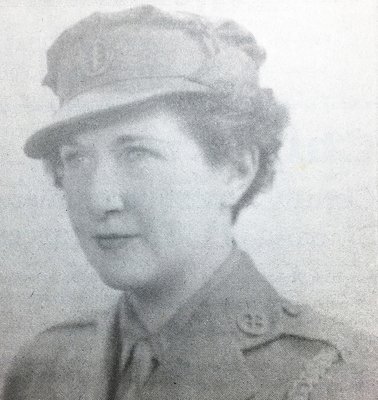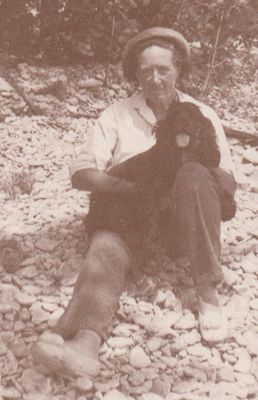
Enid Rogers
McTavish Family
Panels
McTavish FamilyBellevue and the Colborne YearsTrinity ChurchLinks
How Firm a Foundation, p.48 - Enid Rogers and familyHow Firm a Foundation, p.49 - Enid Rogers and family
Newspaper clipping photograph of Enid Rogers Details
Enid Rogers dies
Enid Rogers, a link with this area’s past, dies at age 86
The Colborne Chronicle, Wednesday, July 25, 1990
By Eileen Argyris
A living link with the history of this area has gone with the passing last week of Enid Rogers of Cramahe Township who died peacefully at her home in her 87th year.
She was the daughter of Robert Arthur Rogers and Edith McTavish, born in Winnipeg on September 29, 1903. Her father was the owner of the Crescent Creamery, an extremely large dairy concern which supplied all of Manitoba, Saskatchewan and Alberta as well as British Columbia at one time.
Her mother was the first woman member of the Manitoba legislature, a staunch Liberal, who was never defeated in any election.
Her mother’s side of the family had long-standing connections to this part of Canada, while her father’s side of the family were (sic) Westerners. The McTavishes and Campbells were early settlers in Northumberland County, one branch of the family of Sir George Simpson, “the little Napoleon” of the Hudson’s Bay Company. Simpson was a one-time governor of the company. His daughter, Maria McTavish Campbell, who settled here, was Enid’s great-grandmother.
After she completed her education, Enid proceeded to live to the hilt the life of a young woman of privilege in the 1920s. “She was a typical aristocrat: she rode horses, the whole bit,” said her nephew. She spent her teenaged years on the family estate just south of Colborne, and later travelled extensively, visiting Europe and Africa. She lived for a time in the old “white supremacist” society in Rhodesia (now Zimbabwe) and later owned a beauty salon in South Africa.
“She (Enid) was born with a silver spoon in her mouth, but she wasn’t afraid of a hard day’s work,” says her nephew. The young Enid, who was one of four children, was educated privately in Winnipeg and abroad. Even in her earliest days, “she was a rebel,” recalls her nephew, Jim Lawson, of Ottawa.
At the outbreak of the Second World War in 1939, Enid went to England and enlisted in the Red Cross ambulance service as a driver. Through the bombings of the blitz and for the duration of the war, she risked her life repeatedly to bring comfort and aid to civilians and other victims.
She remained in England until after the war when her mother asked her to come back to Canada in 1946.
In the meantime, Enid’s father had died in 1930. Edith, Enid’s mother, continued with her political career until 1939.

Photograph of Enid Rogers Details
